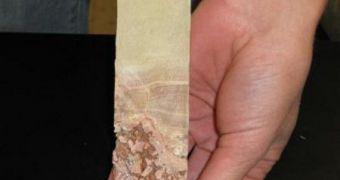Climatologists concluded in a new scientific study that climate variations recorded in Greenland over the course of the last Ice Age also had repercussions for the area that was known as the American Southwest at that point. The data that led to this conclusion were collected from a limestone cave in Arizona, which features the beautiful mineral structures known as stalagmites. In addition to their looks, they are also able to provide geologists with an accurate account of various climate parameters that existed in the atmosphere when they formed.
These particular stalagmites offer a clear record spanning from 55,000 to 11,000 years ago. They document the fact that the abrupt climate changes that took place in Greenland during the Ice Age also had an effect in the Southwest too. This is the first time such a direct correlation between the two areas is detected, University of Arizona in Tucson (UAT) Professor of Geosciences Julia E. Cole, also a coauthor of the new study, explains. During those cold times, most of what is now North America was covered by ice caps, and the Southwest as a whole was a lot wetter and cooler than it is today.
“These changes are part of a global pattern of abrupt changes that were first documented in Greenland ice cores. No one had documented those changes in the Southwest before,” Cole adds. She and her team discovered that the Arizona stalagmites provided a century-by-century account of the changes that took place in the area for more than 44,000 years. Full details of the investigation will be published in the upcoming, February issue of the respected scientific journal Nature Geoscience, in a paper entitled “Moisture Variability in the Southwestern US Linked to Abrupt Glacial Climate Change.”
“This work shows the promise of caves to providing climate records for the Southwest. It's a new kind of climate record for this region,” Cole reveals, adding that the investigation was made possible by a careful analysis of the concentrations of the rare isotope oxygen-18. The rare chemical was deposited in the stalagmites over periods of dry weather, so, by looking at its variation over time, the team was able to determine how the Southwestern climate changed. It was discovered that some variations took as little as 200 years to come full circle.

 14 DAY TRIAL //
14 DAY TRIAL //